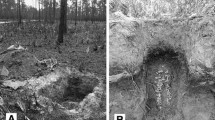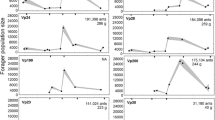Summary:
As colonies of all monogyne ants grow from a single, colony-founding queen to a mature colony with many workers, they develop the species-typical characteristics of the mature colony. This ontogeny, and these species-typical characteristics and their seasonal changes were studied in the Florida harvester ant by excavating 31 colonies of the full range of sizes, on 4 dates representing major phases of the annual cycle. Worker characteristics varied strongly with colony size, location in the nest, and season. All but incipient colonies contained both major and minor workers. The proportion of the colony which was major workers was unaffected by colony size, averaging about 7 %, but showed a small increase in mid-summer. Minor workers increased in size as colonies grew larger, but major workers did not. Most of the changes in minor worker weight were caused by changes in fat stores, which varied by 85 % or more. The patterns of weight variation supported the following life and seasonal history of minor workers. The young, lighter-colored workers (callows), occurred near the bottom of the nest between June and October, confirming a strong age-stratification in the nest. For a given headwidth, callow minors were fatter than their older, darker sisters. In the course of the season, young workers gained lean weight, but lost fat as they moved to nest chambers ever closer to the surface. Finally, when their fat content was less than 10 %, they became foragers on the surface. Along with these age-related changes, minor workers were lightest and least fat in July after the colony had produced its annual crop of sexual alates, and gained an average of 24 % by winter. Workers were heavier and fatter if they came from a larger colony, and heavier and younger deeper in the nest. Seasonal variation in fat weight and dry weight was greater in smaller colonies than large. Although less variable, lean weight was lower in July and in the bottom of the nest, and higher in a larger colony. These patterns were similar, though less precise, for major workers. ¶Altogether, in the life history of harvester ant colonies, the large pulse of early-spring sexuals probably cannot be produced solely from current foraging intake. The metabolic and labor resources needed for sexual production are stored in the bodies of the young workers, whose fat content reaches the annual minimum after producing sexuals. After these sexuals have flown, the colony once again switches to producing workers and storing excess foraging intake as worker fat for over-wintering, and for producing the next year's sexuals. As colonies get larger, this proportional excess increases, giving rise to fatter and larger workers.
Similar content being viewed by others
Author information
Authors and Affiliations
Additional information
Received 2 april 1997; revised 20 January 1998; accepted 10 February 1998.
Rights and permissions
About this article
Cite this article
Tschinkel, W. Sociometry and sociogenesis of colonies of the harvester ant, Pogonomyrmex badius: worker characteristics in relation to colony size and season. Insectes soc. 45, 385–410 (1998). https://doi.org/10.1007/s000400050097
Issue Date:
DOI: https://doi.org/10.1007/s000400050097




